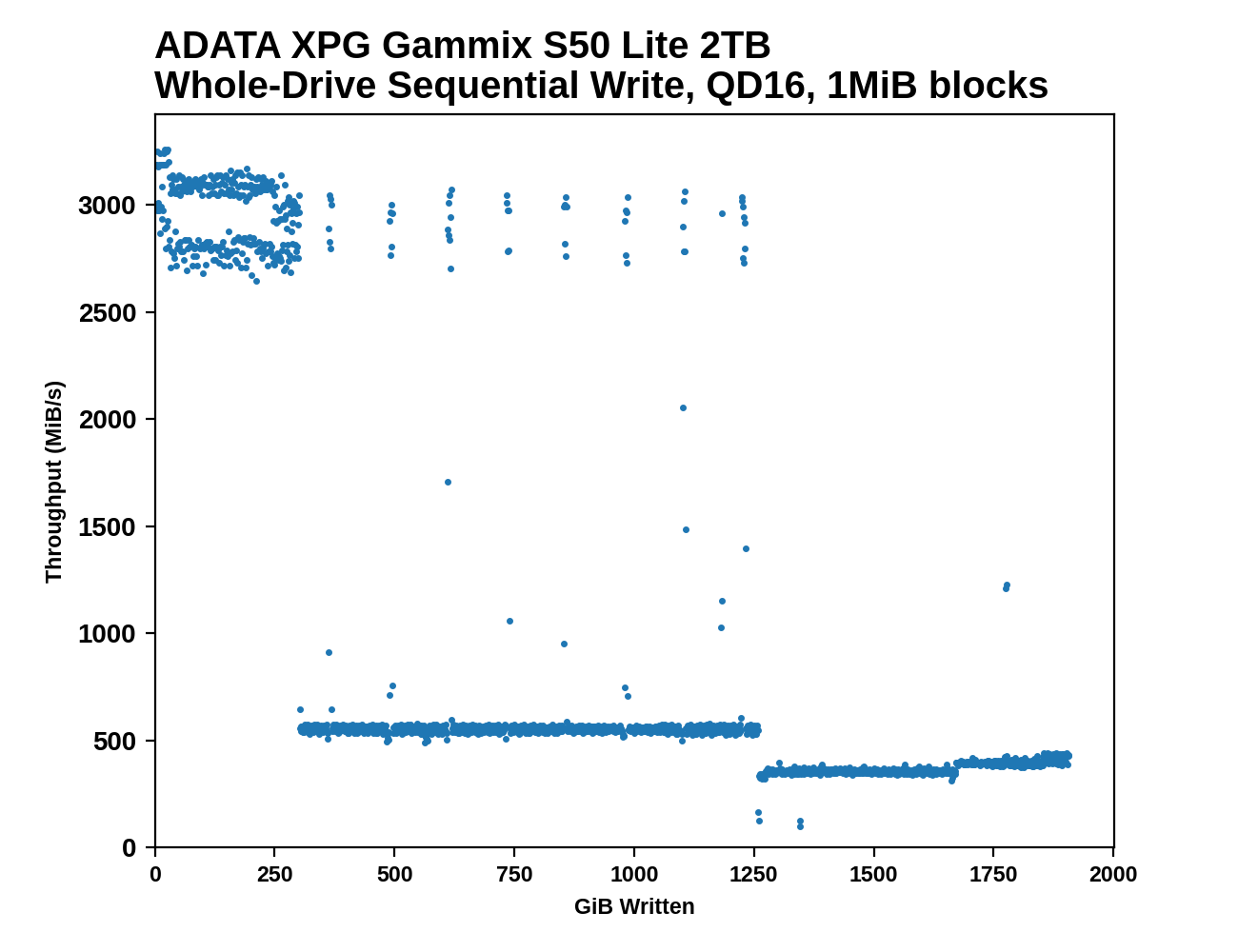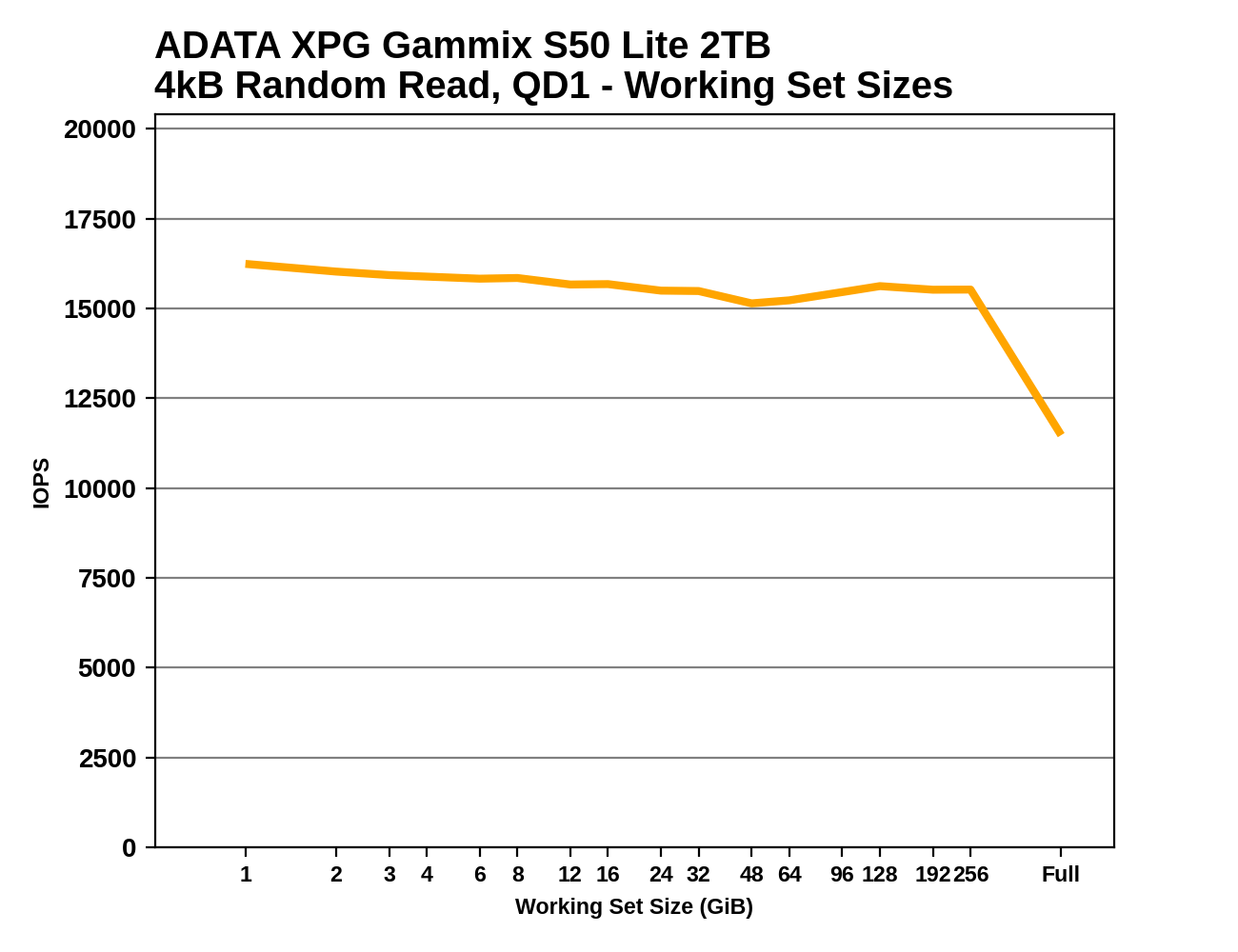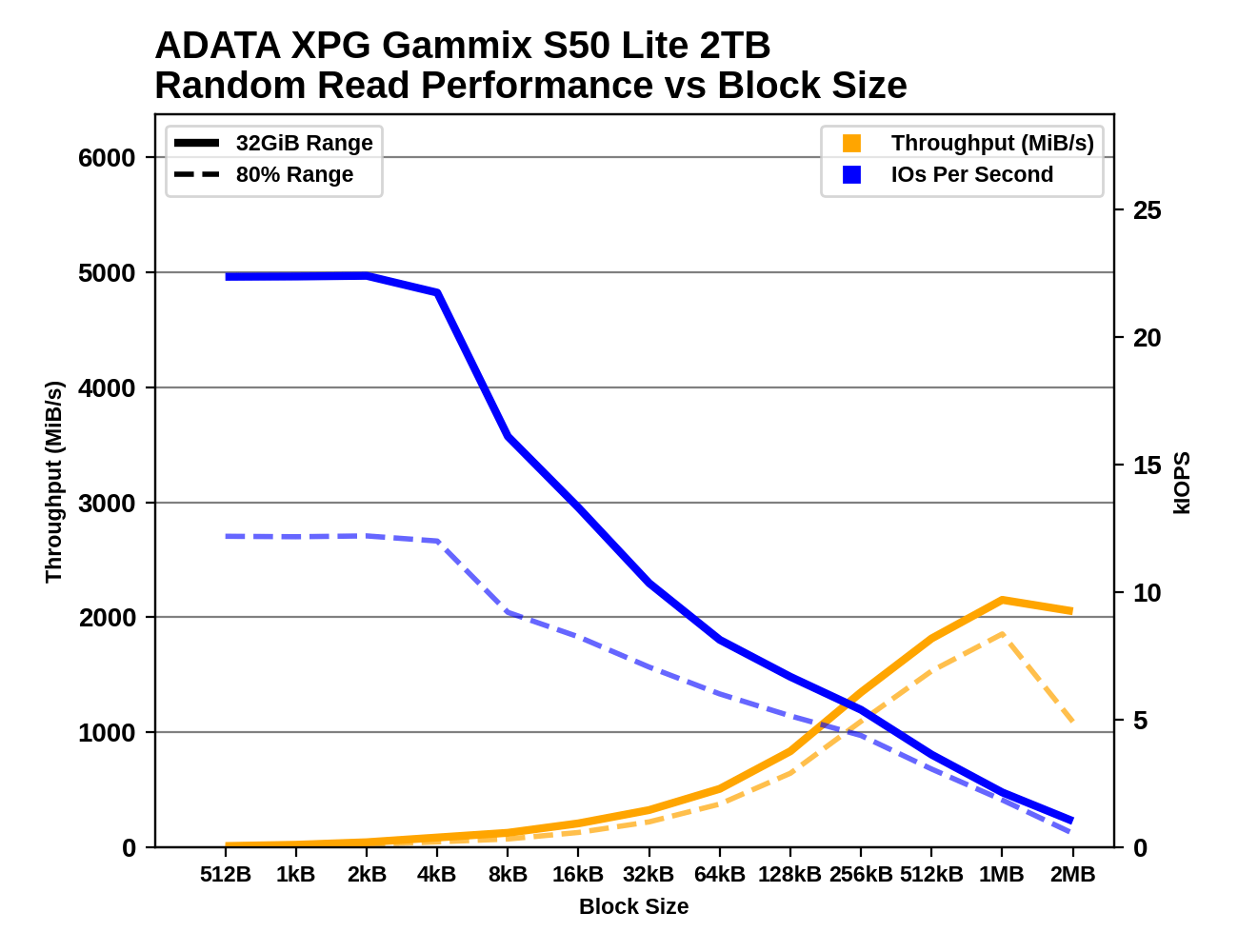The ADATA GAMMIX S50 Lite 2TB SSD Review: Mainstream PCIe Gen4
by Billy Tallis on April 30, 2021 8:00 AM ESTAdvanced Synthetic Tests
Our benchmark suite includes a variety of tests that are less about replicating any real-world IO patterns, and more about exposing the inner workings of a drive with narrowly-focused tests. Many of these tests will show exaggerated differences between drives, and for the most part that should not be taken as a sign that one drive will be drastically faster for real-world usage. These tests are about satisfying curiosity, and are not good measures of overall drive performance. For more details, please see the overview of our 2021 Consumer SSD Benchmark Suite.
Whole-Drive Fill
 |
|||||||||
| Pass 1 | |||||||||
| Pass 2 | |||||||||
The ADATA XPG Gammix S50 Lite shows an almost QLC-like performance drop when the SLC cache runs out after about 300GB: it falls down to SATA speeds. But even though its post-cache write speed is half of what we're used to seeing from TLC drives (most of which use controllers with 8 channels rather than 4), the S50 Lite still has a big lead over the two QLC drives in this bunch.
On the second pass of filling the drive, the S50 Lite's SLC cache is good for only about 14GB and the post-cache performance is much less consistent, with frequent drops below 100MB/s and spikes back up to SLC speeds around 3GB/s.
 |
|||||||||
| Average Throughput for last 16 GB | Overall Average Throughput | ||||||||
Working Set Size
 |
|||||||||
The S50 Lite has excellent random read latency for smaller working sets, beating all but two of the drives in this bunch. But the consequences of having only 1GB of DRAM for a 2TB drive show up at the end of the test, where the random read performance falls off sharply once the reads span the entire drive rather than just a small slice.
Performance vs Block Size
 |
|||||||||
| Random Read | |||||||||
| Random Write | |||||||||
| Sequential Read | |||||||||
| Sequential Write | |||||||||
The S50 Lite offers the same random read IOPS for all the IO block sizes from 512 bytes up to 4kB, but when testing random writes there's a clear preference for 4kB block sizes rather than anything smaller. Rather surprisingly, sequential reads with 4kB block sizes are far slower than for slightly smaller or larger block sizes; it would appear that the drive assumes 4kB reads will be random IO, and skips whatever caching or prefetching is active when using other block sizes.










93 Comments
View All Comments
GeoffreyA - Thursday, May 6, 2021 - link
"All speech is subjected to censorship, including by the mind of the person producing it"Agreed; and that's a good point. But you know what I mean. The ability for someone to say or print something and not be persecuted or thrown into jail next morning. In the end it's all about finding truth. Opinion is usually worthless, but not tolerating it or dissent can lead to truth being swept under the carpet.
Oxford Guy - Thursday, May 6, 2021 - link
Define 'nonsense' and provide examples from my posts, if you're going to try to act like unelected/non-credentialed forum police. 'I'm kinda with' is the sort of language choice that certainly instills the highest confidence and respect.TheinsanegamerN - Monday, May 3, 2021 - link
But we dont HAVE 10TB QLC drives. We have 1/2TB QLC drives, which have significantly less endurance."go the fricka way" until you can come up with a better argument. So long as QLC is selling for TLC capacity and TLC price it is a worthless anti consumer tech.
pSupaNova - Wednesday, May 5, 2021 - link
Hopefully these manufacturers will be getting back lots of dead drives if Chia proof of stake crypto-mining takes off. That will teach them to promote inferior technology!pSupaNova - Wednesday, May 5, 2021 - link
Proof-of Space.meacupla - Sunday, May 2, 2021 - link
They are cheaper, but only if you buy a SSD drive that doesn't use Gen4watzupken - Friday, April 30, 2021 - link
Looking at their recent history of sneakily replacing components on their SX 8200 Pro, I won't bother nor will I recommend others to use this brand.YB1064 - Friday, April 30, 2021 - link
I agree 100%.silverblue - Friday, April 30, 2021 - link
Kingston pulled a similar trick with their V300 series of SSDs back in 2014, albeit "only" with slower NAND - I hear ADATA switched to slower NAND as well as a slower controller.Scour - Friday, April 30, 2021 - link
Kingston started the A400 with Phison S10 and TLC-NAND. Now, at least the 1,92TB use QLC and SM2259XT.